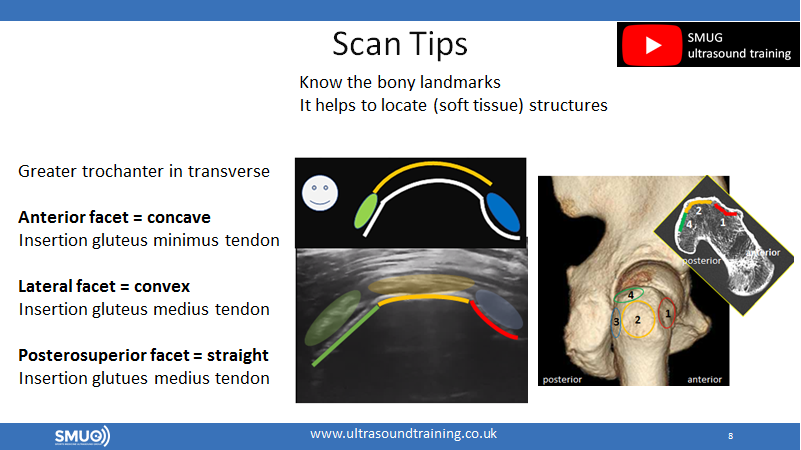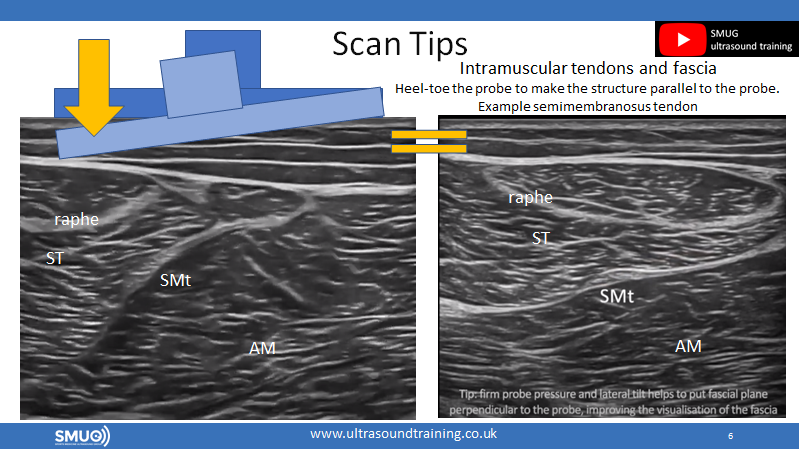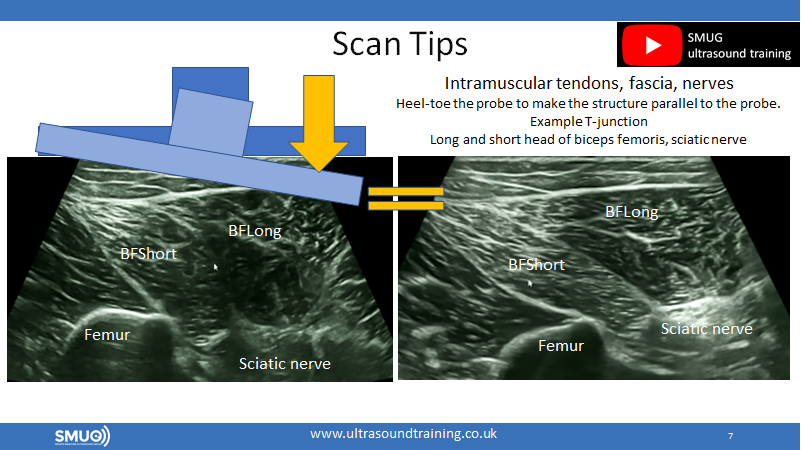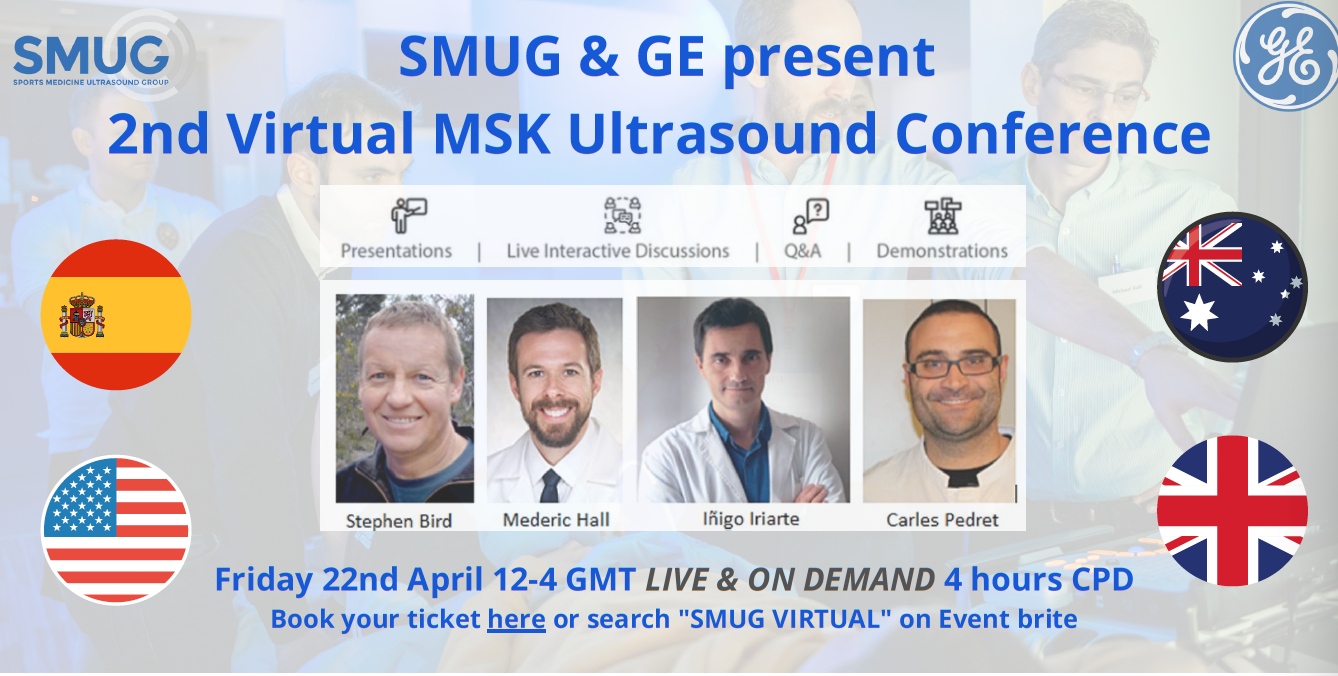You see the probe being put on the patient, and look hopefully up at the screen, but all you see is 100 shades of grey (still). Why is scanning muscles sometimes so much harder than joints and tendons?!
Learning ultrasound can be a challenge at the best of times, but trying to gain competency in scanning muscle injuries (especially in complex areas such as the proximal thigh) is a hard task.
Thankfully, we have teamed up with Robert Laus and Chris Myers at SMUG ahead of their upcoming virtual conference to bring you some top tips, and share some educational videos with you which will hopefully make things a bit easier. You will also find a link to the virtua conference at the bottom which may be of interest.
Tips to scan muscle injuries:
Scanning techniques:
- Know and use (soft tissue) landmarks. It provides a consistent and accurate way to assess structures.

- We assess the tendon/muscle complex. Therefore always scan from insertion of the tendon, through the myotendinous junction into the muscle and intramuscular tendinous structures.
- (Myo)fascia and intramuscular tissues can be challenging to visualise accurately with ultrasound. Use probe skills (heel-toe technique) to place the fascia more parallel to the probe which improves visualisation. Use tilting to optimise visualise intramuscular tendons better.


What about interpreting muscle injuries? What is useful to know?
- Any (intramuscular) tendinous injury increases the functional and structural recovery time.
- Recent muscle and tendon injury classifications for hamstrings, calf muscle and rectus femoris injuries add information for clinical management and return to play.
- Imaging is information gathering. Be aware of the limitations associated with ultrasound imaging, and know when other imaging modalities may be useful and provide valuable information. Think visualising deep structures, intramuscular tendinous injuries, information about structural tendon and muscle healing.
- Fear the re-injury. Can we use imaging to reduce this challenging but important group of injuries?
A huge thanks to SMUG for making the following videos freely accessible – highly recommended viewing – enjoy!
If you want to learn more about MSK Ultrasound, especially in the context of muscle injuries, then this conference may well be for you!

https://www.eventbrite.co.uk/e/smug-virtual-msk-ultrasound-event-2022-tickets-201507633757